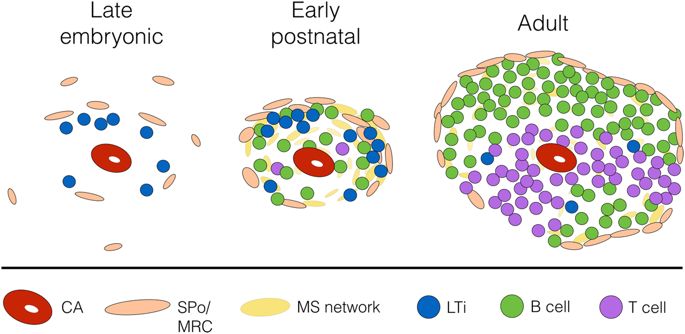npj Regenerative Medicine ( IF 6.4 ) Pub Date : 2018-01-16 , DOI: 10.1038/s41536-018-0039-2 Jonathan K H Tan 1 , Takeshi Watanabe 2, 3

|
The spleen is an organ that filters the blood and is responsible for generating blood-borne immune responses. It is also an organ with a remarkable capacity to regenerate. Techniques for splenic auto-transplantation have emerged to take advantage of this characteristic and rebuild spleen tissue in individuals undergoing splenectomy. While this procedure has been performed for decades, the underlying mechanisms controlling spleen regeneration have remained elusive. Insights into secondary lymphoid organogenesis and the roles of stromal organiser cells and lymphotoxin signalling in lymph node development have helped reveal similar requirements for spleen regeneration. These factors are now considered in the regulation of embryonic and postnatal spleen formation, and in the establishment of mature white pulp and marginal zone compartments which are essential for spleen-mediated immunity. A greater understanding of the cellular and molecular mechanisms which control spleen development will assist in the design of more precise and efficient tissue grafting methods for spleen regeneration on demand. Regeneration of organs which harbour functional white pulp tissue will also offer novel opportunities for effective immunotherapy against cancer as well as infectious diseases.
中文翻译:

出生后脾组织再生和器官发生的决定因素
脾脏是过滤血液的器官,负责产生血源性免疫反应。它也是一个具有非凡再生能力的器官。脾脏自体移植技术已经出现,以利用这一特性并在接受脾切除术的个体中重建脾组织。虽然这个过程已经进行了几十年,但控制脾脏再生的潜在机制仍然难以捉摸。对次级淋巴器官发生以及基质组织细胞和淋巴毒素信号在淋巴结发育中的作用的深入了解有助于揭示脾再生的类似要求。现在,这些因素被考虑用于胚胎和出生后脾脏形成的调节,以及成熟白髓和边缘区室的建立,这对于脾介导的免疫至关重要。更好地了解控制脾脏发育的细胞和分子机制将有助于设计更精确、更有效的组织移植方法,用于按需脾脏再生。具有功能性白髓组织的器官的再生也将为针对癌症和传染病的有效免疫疗法提供新的机会。











































 京公网安备 11010802027423号
京公网安备 11010802027423号